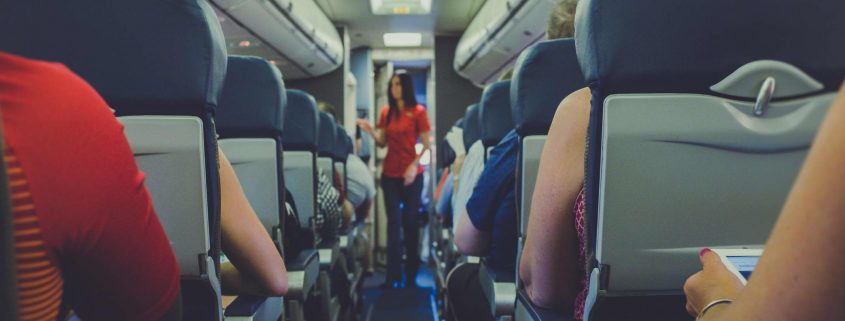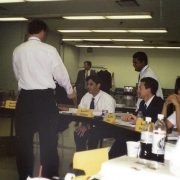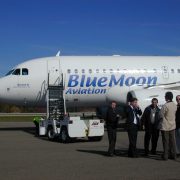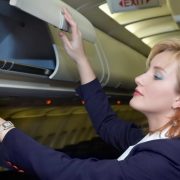How to fail an inspection
How to fail an inspection with the FAA/CAA.
The last thing any flight attendant wants to do is fail an inspection, especially when being checked by the regulating agency! In the United States and around the world, the aviation safety regulating agency provides oversight of each passenger-carrying airline in operation. FAA/CAA inspectors provide many functions beyond the ramp check and your hearing, “I’m from the — and I’m here to help.” Collectively, aviation safety agencies perform closed-loop continual improvement oversight of airlines. Inspectors read, evaluate, make manual change recommendations, and approve/accept airline manuals. Additionally, they’ll observe the airline’s training programs to assess the quality of training conducted and to ensure the training conducted is in accordance with the airline’s published manuals. Then, they go out on flights to observe and assess the performance of the overall operation, which is based on the classroom training, which is based on the airline’s manuals.
When things go wrong
When something goes wrong, the system is usually reviewed to identify where the deficiency lies. Was it the crewmember’s performance? Was it the training provided? Is there a lack of testing on that subject? Is the manual deficient in content or missing necessary content related to “X” situation? There are numerous possibilities that can be and are evaluated to determine the root cause of the error. When identifying possible problems, the cause can be one or more elements that contributed to the failure. One thing which every crewmember never wants to find themselves in is being on the receiving end of an inspection by their civil aviation authority and failing that inspection. One of the reasons why a crewmember may fail inspection is that they don’t know what can cause them a failure. So, here are the most common potential causes of an inspection failure. Knowing this will help you be better prepared for an inspection and keep you working as a better crewmember, ensuring you are knowledgeable and capable of handling all these different topics.
Common Ways to Fail a ramp or inflight inspection
- Not having any up-to-date Flight Attendant Manual with revisions & Operations Bulletins inserted – those using paper manuals.
- Not updating your electronic manual after a revision comes out.
- Reporting for duty and at the start of the workday the electronic manual is not charged appropriately in accordance with the airline’s approved program.
- Not having a working flashlight.
- You may notice in your manual it specifies a working flashlight because there are the few crewmembers that push the limits, “the manual said I have to have a flashlight, it doesn’t say it has to work.”
- Allowing an intoxicated passenger to board the aircraft or allowing a passenger to become intoxicated while onboard.
- Sometimes it’s not possible to detect an intoxicated person until they get on the plane and go to their seat. You need to take appropriate corrective action should you identify someone that appears intoxicated after they board.
- Not checking emergency equipment thoroughly upon boarding the aircraft.
- Equipment being present isn’t enough – it must meet your preflight requirements!
- Failure to make all required announcements & ensure passenger compliance as applicable.
- Failure to visually verify and/or perform exit row passengers meet the designated minimum criteria.
- Not ensuring child restraint seats are FAA-approved and make sure they have the appropriate labels.
- Failing to individually brief passengers who have visual/hearing disabilities.
- Not verifying “Cabin is Secure,” before the primary boarding door is closed. Cabin secure includes ensuring overhead bins are closed and all luggage is stowed.
- Failure to engage slides prior to pushback.
- Not securing carts/galley prior to pushback.
- Failure to observe sterile cockpit requirements.
- Failing to notify the Captain if passengers are not seated for movement on the surface.
- Not being seated at your jumpseat with seatbelt on during movement on the surface unless performing duties related to the safety of the flight.
- Leaving a cart without brake engaged or leaving the card unattended, more than 10 feet away.
- Knowing a passenger was smoking in the lavatory or cabin and failing to address the situation.
- Disengaging the slides before the aircraft comes to a complete stop at the jetway.
- Stowing non-emergency equipment items in bins marked for Emergency Equipment that do not have a partition to separate equipment from other objects.
- Not knowing your emergency procedures.
- Not knowing where to find the emergency procedures in your manual.
- Know what chapter to find it in!
- Not knowing your emergency commands.
- Not knowing your ABP briefings.
- Not knowing the contents of the latest revision or bulletin.
- Not ensuring the cockpit door remains locked inflight.
- Not following the required cockpit exit/entry procedures.
- Not recording cabin discrepancies as designed by your airline.
- Boarding or deplaning passengers to/from the aircraft without the required minimum crew onboard.
- Not ensuring passengers comply with portable electronic device procedures.
- Not asking to see the inspector’s government-issued FAA/CAA identification.
- As a flight attendant, you have the right to ask to see the inspector’s ID when they are on the plane.
- Not challenging people on the ramp or anyone that attempts to board your aircraft without identification badges.
- Not ensuring lavatories meet preflight check requirements.
- There are a few things that can cause a lavatory to not meet preflight requirements. Do you know what can make a lavatory inoperative? Do you know what to do if one is found inoperative?
- Talking or reading while seated on your jumpseat during taxi, takeoff and landing.
- Remember, you are there for passenger safety. Be focused on your environment when on the ground and shortly before takeoff and landing, the most critical phases of the eoperation.
- Getting out of your jumpseat after landing to perform non-safety-related duties.
- Stay seated until the plane comes to a complete stop at the designated parking area unless you absolutely have to get up, and it’s for a safety-related duty.
Knowing all this, you now should be aware of what you need to know to do well during your checkride. As you are a professional crewmember, you are expected to have a higher level of knowledge and be able to answer any safety-related questions since all passengers turn to their flight attendants should an irregular or emergency event occur. Make sure you know your manual procedures well; you owe it to your profession and passengers to maintain the high standards of knowledge and performance as an airline employee.









Leave a Reply
Want to join the discussion?Feel free to contribute!